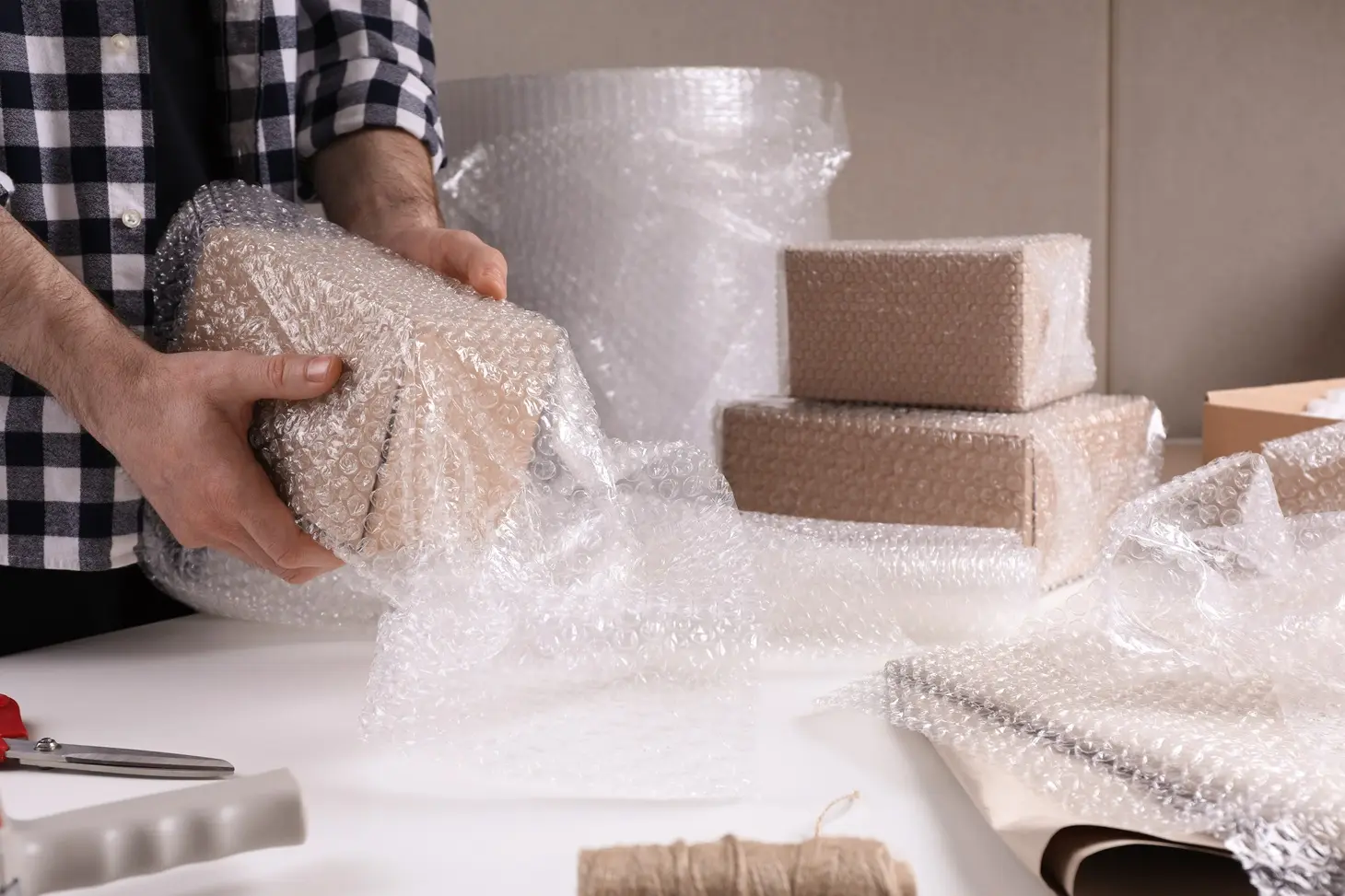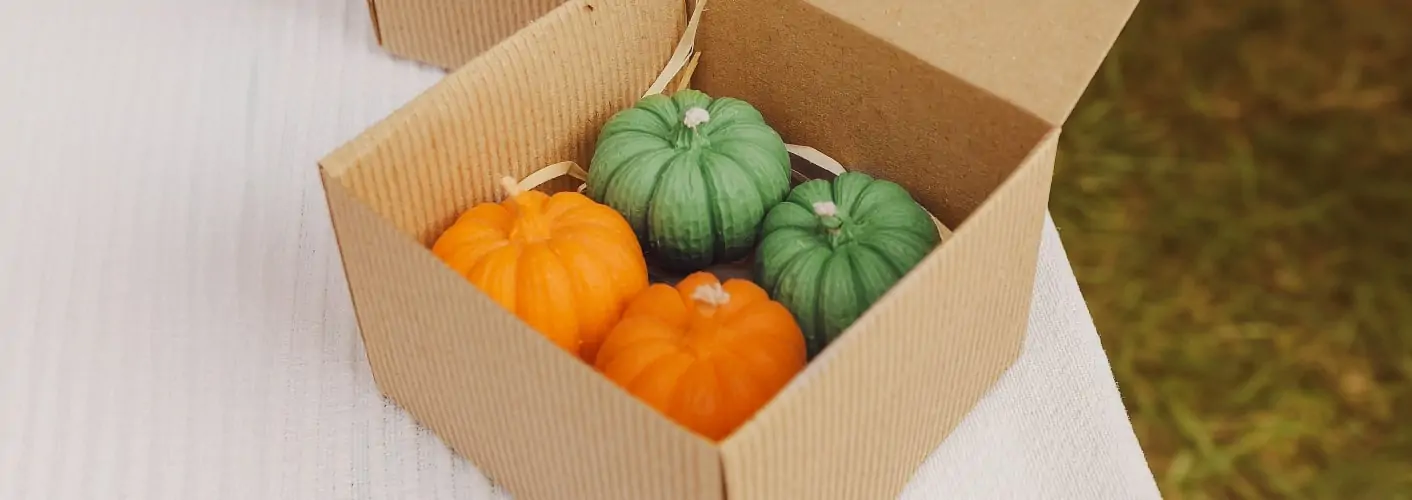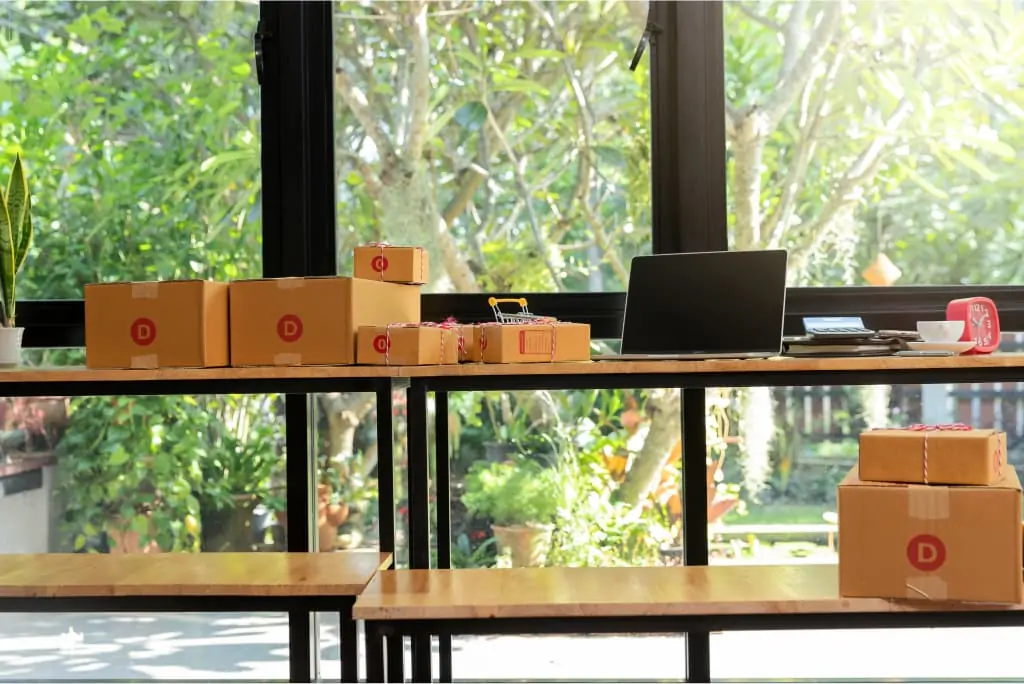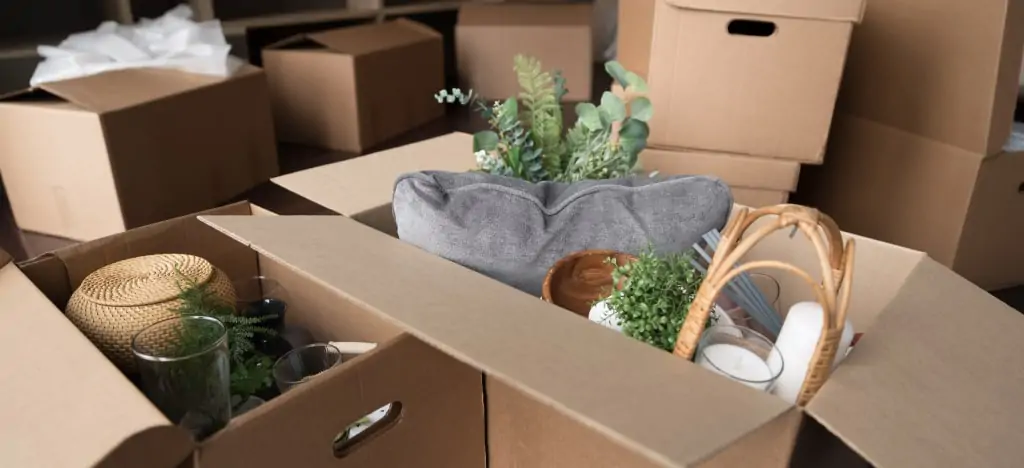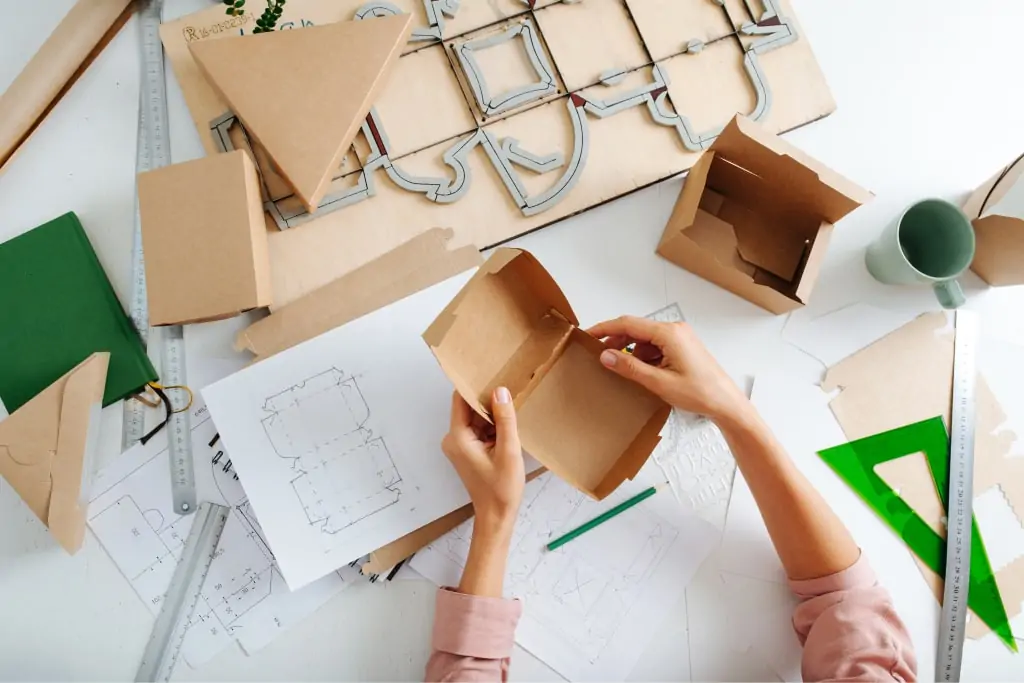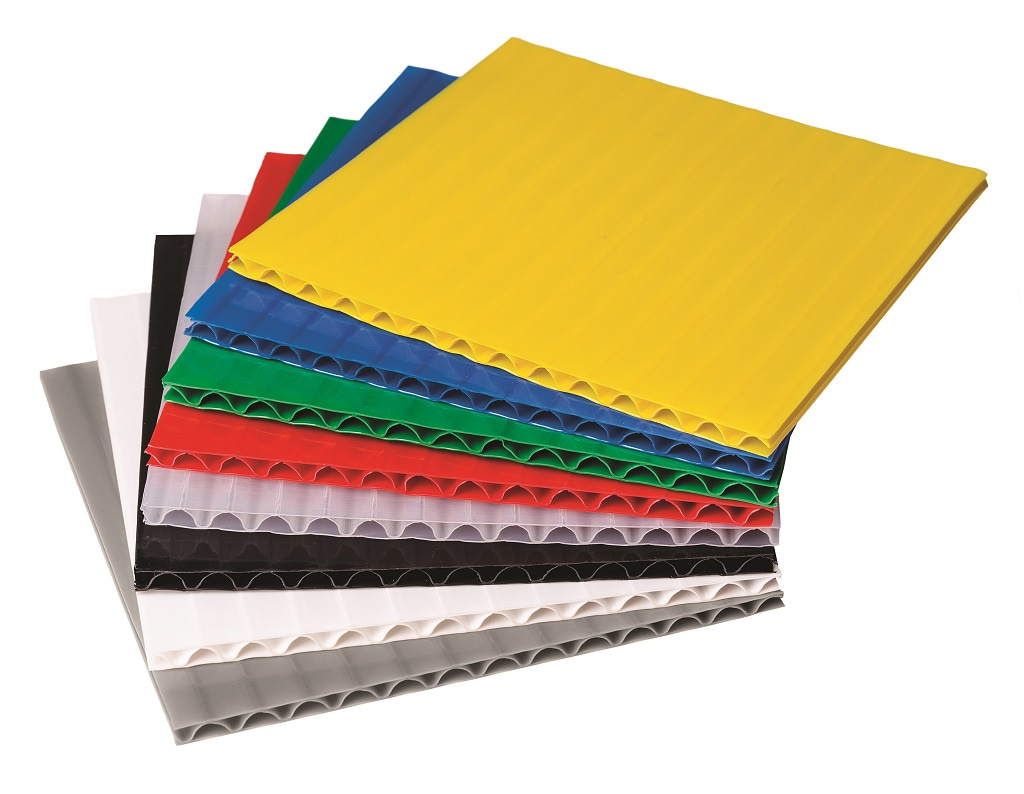Exploring the world of product packaging? Whether you’re shipping small, fragile items, or large bulky goods, there are some different types of packaging available to ensure each and every order arrives safe and sound. But which is right for you?
The type of packaging you choose, whether it be plastic, cardboard, foil, metal, or another material, depends largely on the needs of each individual package. To better understand what materials are best for your shipments, we are sharing twelve of the different types of packaging materials commonly used for products and parcels, what they are made of, and when each is best used.
#1. Paperboard Boxes

3 X 3 X 3″ Corrugated Mailer
Paperboard boxes are a paper-based packaging material used for a range of different needs. This material is lightweight, yet strong, and is easily cut and manipulated to suit the shape of your product. With this malleability and strong hold, it is often used in personalized packaging.
Made by turning fibrous materials from wood or recycled waste into pulp, this material is then bleached and turned into paperboard packaging. It can come in different grades, each of which is suitable for different packaging requirements.
SBS, or solid bleached sulfate, paperboard is most commonly used for packing medicines, milk, cosmetics, juice, and frozen food. On the other hand, CUK, or coated unbleached kraft, paperboard is preferred by those looking for natural, environmentally-friendly alternatives for similar packaging needs. This material is less moisture resistant, so less commonly used with food and other perishable items.
#2. Corrugated Boxes

2 X 12 X 4 1/2″ Stackable Bin Box
One of the most popular forms of packaging is corrugated boxes. This, in its simplest definition, refers to cardboard. Corrugated boxes produce large shipping, shoe, and storage boxes, but also come in different types depending on the durability and strength of the box. Thankfully, identifying different corrugated materials is a simple task. It consists of 3 layers of paper, including an outside layer, an inside liner, and a corrugated medium, or fluting. This corrugated medium is what gives corrugated boxes their rigidity and strength.
The main material used to create corrugated boards is recycled paper. These boards can be reused and recycled many times, making them an environmentally-friendly choice.
Corrugated boards offer different types, including single-faced, double-faced, twin wall, and triple wall, each offering different characteristics, performances, and strengths. Uses for this different packaging range from retail packaging to small consumer goods, and pizza delivery boxes.
#3. Plastic Boxes
Plastic is used in a number of different products, with many traditional materials being replaced with plastic.
Plastic box packaging options for products offer a range of benefits and tend to be more durable than paperboard boxes. Plastic packaging containers, when air-tight, can preserve the quality of food and limit contamination issues. Additionally, this material doesn’t break down easily and can safely be stored in more extreme conditions.
Another advantage of plastic is that it can showcase a product without actually opening the packaging. Plus, it’s lightweight, flexible, and can be applied with coating or films to further enhance its aesthetic.
While many believe the contrary, plastic is recyclable, and it’s cost-effective.
#4. Rigid Boxes
Rigid boxes are a step up from a standard cardboard box, offering improved durability and a premium appearance.
Rigid boxes are made out of condensed paperboard that is 4x thicker than paperboard used in standard folding cartons. However, due to their durability, rigid boxes are some of the most expensive box styles available. Additionally, they are non-collapsible, so they have a higher volume during shipping which results in higher shipping rates.
Rigid boxes are often used in merchandising cosmetics, technology, jewelry, and high-end luxury items.
#5. Foil Sealing
One of the types of packaging material options most commonly used for coffee and tea packaging is foil-sealed bags. This material is known to keep these items dense, helping preserve the flavor and protect them from bacteria to ultimately prolong the shelf life.
Beyond food, foil sealing can be used to package bedding and other clothing items. To create this packaging, oxygen is removed from the bag to keep the fabric tight and secure, preventing bacteria from forming.
Nuts, cereals, smoked fish, cheese, and meats are also packaged in foil-sealed bags. This process helps prevent these goods from spoiling.
#6. Chipboard Package

1 1/2 X 1 1/2 X 4″ Kraft Reverse Tuck Folding Carton (1000/Case)
Chipboard packaging is most commonly relied upon by the electronic, medical, cosmetic, beverage, and food industries. This is essentially a type of paperboard that’s made from reclaimed paper stock. With this composition, chipboard packaging can easily be formed, folded, and cut, offering a cost-effective packaging solution.
Chipboard packaging comes in different strengths and densities to suit a range of different product needs. However, this is not recommended for businesses that are shipping heavier items, as chipboard is lightweight and better used for grocery items, such as cereal crackers, or tissue boxes. Additionally, if it will be stored in a space with heavy moisture, the chipboard will rapidly weaken, causing it to discolor or expand.
#7. Foam
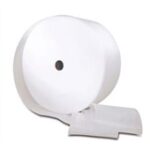
1/8″ 72″ X 550` Slit 24″ Perfed 12″ Foam (3 Rolls/Bundle)
Foam types of product packaging can come in a range of shapes and sizes but are all made with polystyrene beads that were heated until they expanded into this spongy material. The main perk of this packaging is that it can be reused.
This is ideal for packaging items like dishes, which may be placed back within their packaging for safekeeping.
#8. Kraft Paper

18 X 24″ 60# Indented Kraft Paper Sheets (25#/Bundle)
Kraft paper is a durable material that will both fold and flatten without losing its shape. This offers a super affordable option for packaging, although the price can increase depending on the grade and quality.
It’s important to ensure that kraft boxes have lids to ensure everything inside stays dry. Keep in mind that this solution does not offer to cushion to protect fragile items from breaking – a key concern for more delicate products.
#9. Polythene

1 X 2″ 2 Mil Flat Poly Bag (10000/Case)
One of the most common types of packing materials for shipping to food service establishments is polythene.
Polythene is described as plastic sheets usually found at restaurants and fast-food restaurants. They are ideal for insulating against heat and are great for frozen foods or other perishable items that require temperature controls. Additionally, polythene can help protect products from rain.
One consideration with polythene is that it is not waterproof, so any clothing or electronics should not be wrapped in this material. Additionally, it has been known to break down when exposed to UV light over time.
#10. Stretch Film

3″ X 1000` 80 GA. Narrow Width Bundling Stretch Film (18 Rolls/Case)
Another one of the different types of packaging option is stretch film. Stretch film is a material that’s commonly used on boxes, as it wraps around a box to seal it shut. This prevents any unwarranted surprises when opening a box, shielding it from unwanted materials.
Keep in mind that this plastic cannot be recycled, so will have an environmental impact in the long run.
#11. Shrink Film
Shrink film is a packaging material used for a range of items, primarily for jewelry and other small goods.
Shrink film is made from thin plastic material that is tightly wrapped around an item that will be shipped, keeping it contained in place so it cannot be undone. It features an adhesive on one side so that it does not need to be placed within the sides of the packaging of the goods.
One consideration for shrink film is that it must have time to air dry before sending. However, if you’re a professional company, you already know how long this will take based on your location.
#12. Plastic Bag
The last of the different packaging materials are plastic bags. This is an alternative to envelopes or boxes, however, plastic bags are notoriously non-recyclable.
The key benefit to plastic bags is that they can send lightweight, easy-to-handle items with ease. It’s additionally a much more affordable material than many other packaging options, such as cardboard boxes.
The main downside of plastic bags is that they are flimsy. Plastic bags can easily rip and tear, risking the products that are packaged within. Additionally, if plastic bags get wet, they may sometimes leak water inside, damaging the goods within.
Conclusion
No matter if you’re looking for the best types of retail packaging or the ideal way to ship heavy goods, there is a packing material to suit your needs. While considering the different types of packaging, keep in mind your unique product needs to ensure your product safely arrives at the desired destination without any damage. To explore your options for forms of packaging, check out our premium packing materials at Brandt Box today to safely pack and ship your items for successful shipments, every time.


